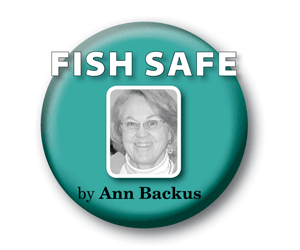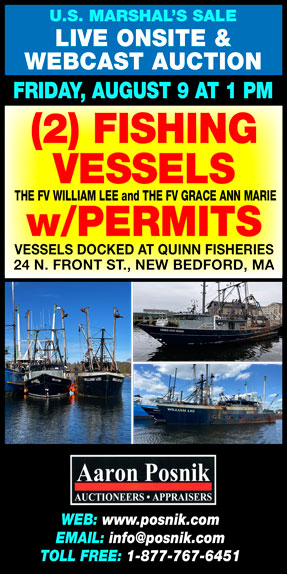We are always looking for ways to reduce fisherman risks and ensure efficient search and rescue operations.
Here are some suggestions for actions that any captain and crew can take prior to leaving the dock that could make a significant difference in the timeliness of a rescue if later needed.
First, the captain could provide a float plan to a family member or other responsible party.
Unlike the flight plan that aircraft pilots file with the Federal Aviation Administration (FAA), a float plan would be given to the family, not the Coast Guard.
Sample float plan
The Coast Guard auxiliary has created a float plan for recreational boaters that is quite comprehensive and easily adapted for commercial fishing.
The sections include:
- Vessel identification: Name, port, document/registration, year, length, color, etc.;
- Propulsion: Types and number of engines, plus fuel capacity;
- Communications: Radio call sign, digital selective calling MMSI number, radio types and frequencies – or channels monitored, cell or satellite phone numbers, and e-mail;
- Visual Distress Signals: Flares and other on-board signals;
- Audible Distress Signals;
- PFDs (other than Type IV devices): Number of;
- Ground Tackle: anchor;
- Other Gear: EPIRB, fire extinguisher, life raft, supplies, etc.;
- Operator: Captain’s name, age, gender, vehicle registration number, experience, etc.;
- Passengers/Crew: List with name, age, gender, and notes on medical or other condition; and
- Itinerary: Dates, times, and waypoints.
Page 2 of the float plan, the boating emergency guide, takes the family through the steps to follow should they be concerned because the vessel is overdue, failed to report, or believed to be in distress.
Key elements from the float plan would then be provided to the Coast Guard should a search and rescue operation be needed.
Creating your float plan
The sample float plan/ boating emergency guide is available at <www.floatplancentral.org/>.
With clickable drop-down menus and descriptions of the requested Information that pop-up as you “mouse over” each item, the filled-in float plan can be saved electronically, revised and updated for each trip, e-mailed to key contacts, and printed out.
This is worth saying again: The float plan is not to be sent to the Coast Guard, but can be used by the family to inform the Coast Guard or other responders in the event of a rescue.
To help emergency responders know what gear and fishing operations to expect, the float plan should include mention of the fishery – such as “lobster,” “groundfish,” or “scallop,” etc. – under the entry prominent features.
Under other gear, mention of a working dewatering pump, and the number of survival suits would be helpful.
Under the heading passengers/crew, include name, street/city, emergency contact phone, known chronic medical conditions such as diabetes, heart disease, epilepsy, and key info such as, “can’t swim.” For non-English speakers, provide language spoken.
Each crew member
Secondly, each crew member should fill-out the four-page booklet, Commercial Fishing Safety/Search/Rescue Information for Family and Friends of Fishermen, that Angela Sanfilippo of the Gloucester Fishermen’s Wives and I developed after a major vessel loss in Gloucester.
This filled-out booklet should be filed at home with his/her family’s high priority personal documents.
Any crew member’s family should be able to locate the document and provide essential information to the Coast Guard, if needed.
Finally, I have promoted the idea at the Maine Fishermen’s Forums and elsewhere that the captain should collect from each crew member, on each trip, a sealed envelope containing each crew member’s medical condition, prescription drug list, and emergency contact information.
In the event of evacuation from the vessel, this envelope would be given, sealed, to the Coast Guard.
Ann Backus, MS, is the director of outreach for the Harvard School of Public Health’s Department of Environmental Health in Boston, MA. She may be reached by phone at (617) 432-3327 or by e-mail at <abackus@hsph.harvard.edu>.

Read the rest of this story and much, much more in the March issue of Commercial Fisheries News. Buy this issue or Subscribe.
(Read online immediately with access key and download for future reference.)








 Updating...
Updating...